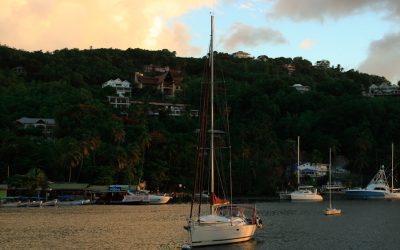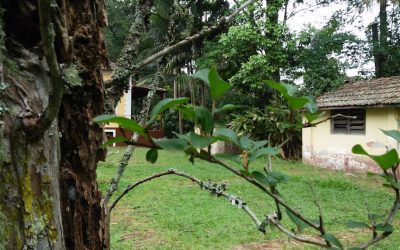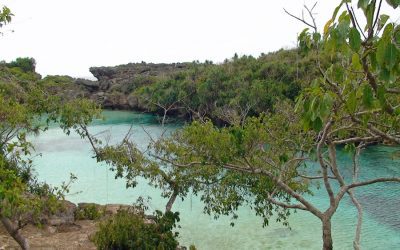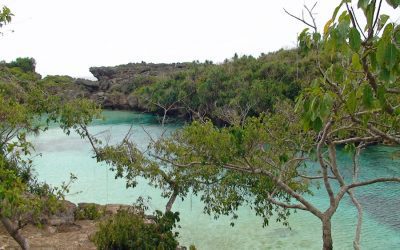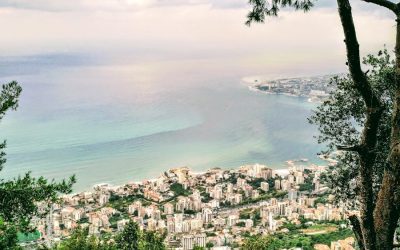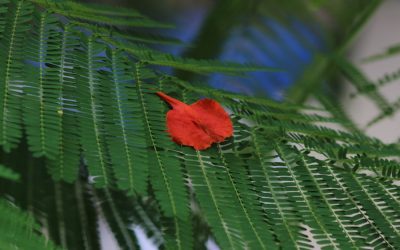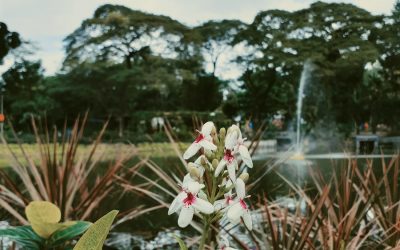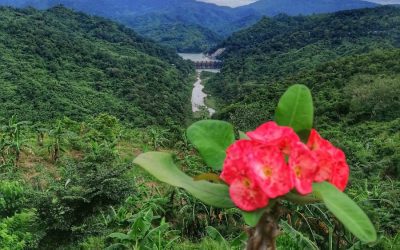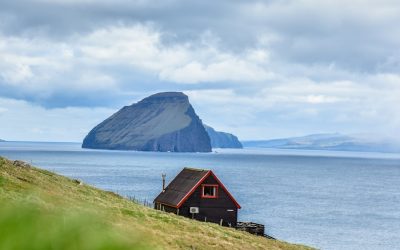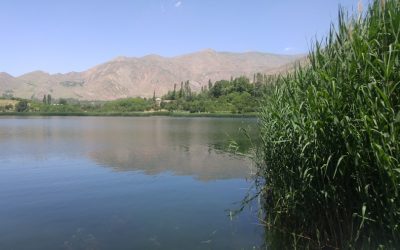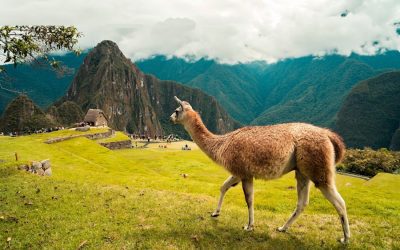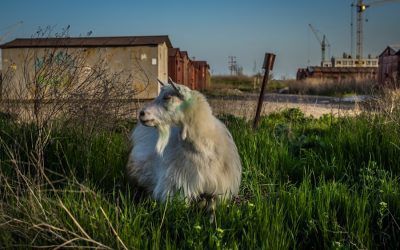World Geography
Geography is the study of the Earth’s landscapes, environments, and the relationships between people and their surroundings. It encompasses both the physical aspects of the Earth, such as its landforms, bodies of water, and climate, as well as the human aspects, including population distribution, cultures, and economies. World geography is a broad field that seeks to understand the complexities of our planet and how humans interact with it. By studying world geography, we can gain a deeper appreciation for the diversity of our planet and the interconnectedness of its various regions.
Geography is a multidisciplinary field that draws on elements of physical science, social science, and humanities. It involves the use of maps, spatial analysis, and geographic information systems (GIS) to understand the Earth’s surface and the processes that shape it. World geography also encompasses the study of human geography, which examines the ways in which people and their activities are distributed across the Earth. By understanding world geography, we can better appreciate the environmental, cultural, and economic challenges facing different regions of the world. This knowledge is crucial for addressing global issues such as climate change, resource management, and international development.
The Five Oceans and Seven Continents
The Earth’s surface is divided into five major oceans: the Pacific, Atlantic, Indian, Southern (or Antarctic), and Arctic Oceans. These vast bodies of water play a crucial role in regulating the Earth’s climate and supporting diverse marine ecosystems. The oceans also serve as important transportation routes and a source of food and other natural resources for human societies around the world.
In addition to the oceans, the Earth’s landmasses are divided into seven continents: Africa, Antarctica, Asia, Europe, North America, Australia (or Oceania), and South America. Each continent has its own unique physical and cultural characteristics, shaped by millions of years of geological processes and human history. From the deserts of Africa to the rainforests of South America, the continents offer a rich tapestry of landscapes and environments for exploration and study.
Major Mountain Ranges and Deserts
The Earth’s surface is also marked by major mountain ranges and deserts that have shaped the planet’s physical and cultural landscapes. The Himalayas, for example, are the highest mountain range in the world and are home to diverse ecosystems and cultures in countries such as India, Nepal, and Bhutan. The Andes in South America, the Rockies in North America, and the Alps in Europe are other prominent mountain ranges that have influenced human settlement patterns and economic activities.
Deserts cover about one-third of the Earth’s land surface and are characterized by low precipitation and extreme temperatures. The Sahara Desert in Africa is the largest hot desert in the world, while the Gobi Desert in Asia is one of the largest cold deserts. Deserts are not only home to unique flora and fauna but have also been important trade routes and cultural crossroads throughout history.
Climate Zones and Biomes
The Earth’s climate is influenced by a variety of factors, including latitude, altitude, ocean currents, and prevailing winds. As a result, the planet is divided into different climate zones, each with its own characteristic weather patterns and ecosystems. The equator, for example, experiences a tropical climate with high temperatures and heavy rainfall, while the polar regions have a cold and dry climate.
These climate zones give rise to different biomes, or large ecological areas characterized by distinct plant and animal communities. The tropical rainforest biome, found near the equator, is home to a diverse array of species and is vital for regulating the Earth’s climate. The grasslands biome, found in regions such as the African savannah and North American prairies, supports grazing animals and has been important for human agriculture throughout history.
Human Geography and Population Distribution
Human geography examines the ways in which people and their activities are distributed across the Earth’s surface. It encompasses topics such as population growth, migration patterns, urbanization, and cultural diversity. Understanding human geography is crucial for addressing global challenges such as poverty, inequality, and environmental degradation.
Population distribution is uneven across the world, with some regions experiencing rapid population growth while others are declining. The majority of the world’s population lives in Asia, particularly in countries such as China and India. Urban areas are also growing rapidly, with more than half of the world’s population now living in cities. This trend has significant implications for infrastructure development, resource management, and social inequality.
Historical and Cultural Geography
Historical geography examines how human activities have shaped the Earth’s landscapes over time. It explores topics such as colonialism, trade routes, and the rise and fall of empires. Cultural geography focuses on how human cultures have developed in different regions of the world and how they interact with their environments.
The Silk Road, for example, was an ancient trade route that connected China with Europe and facilitated the exchange of goods, ideas, and technologies across Eurasia. This historical trade route had a profound impact on the development of cultures and economies along its path. Similarly, cultural geographers study how different societies have adapted to their environments through practices such as agriculture, architecture, and religious beliefs.
The Importance of Geographic Knowledge
Geographic knowledge is crucial for addressing global challenges such as climate change, resource management, and international development. By understanding world geography, we can better appreciate the environmental, cultural, and economic challenges facing different regions of the world. This knowledge is crucial for addressing global issues such as climate change, resource management, and international development.
Geographic knowledge also helps us to understand our interconnectedness with other regions of the world. By studying world geography, we can gain a deeper appreciation for the diversity of our planet and the interconnectedness of its various regions. This understanding can foster a sense of global citizenship and empathy for people from different cultures and backgrounds.
In conclusion, world geography is a complex and multifaceted field that encompasses both physical and human aspects of the Earth’s landscapes. By studying world geography, we can gain a deeper appreciation for the diversity of our planet and the interconnectedness of its various regions. This knowledge is crucial for addressing global challenges such as climate change, resource management, and international development. It also helps us to understand our interconnectedness with other regions of the world and fosters a sense of global citizenship.
FAQs
What is world geography?
World geography is the study of the Earth’s landscapes, environments, and the relationships between people and their environments. It encompasses the physical features of the Earth, as well as the human activity that takes place on it.
Why is world geography important?
World geography is important because it helps us understand the world around us. It provides insights into the physical and human processes that shape our planet, and helps us make informed decisions about how to interact with our environment.
What are the main branches of world geography?
The main branches of world geography include physical geography, which focuses on the Earth’s natural features and processes, and human geography, which examines the relationships between people and their environments.
How does world geography impact our daily lives?
World geography impacts our daily lives in numerous ways, from influencing the weather and climate we experience, to shaping the availability of natural resources and influencing the distribution of populations and cultures around the world.
What are some key concepts in world geography?
Key concepts in world geography include location, place, human-environment interaction, movement, and region. These concepts help geographers understand and interpret the world around them.
Exploring the Flora and Fauna of Saint Lucia
Saint Lucia, a gem nestled in the Caribbean, is renowned not only for its stunning landscapes and vibrant culture but also for its remarkable biodiversity. This island, part of the Lesser Antilles, boasts a unique blend of ecosystems that support a wide array of plant and animal species. The geographical isolation of Saint Lucia has led to the evolution of many endemic species, making it a hotspot for biodiversity. The island’s varied topography, which includes mountains, rainforests, and coastal areas, creates diverse habitats that are home to an impressive range of flora and fauna. The rich biodiversity of Saint Lucia is not merely a backdrop to its natural beauty; it plays a crucial role in the ecological balance of the region. The island’s ecosystems provide essential services such as carbon sequestration, water purification, and soil fertility. Furthermore, the intricate relationships between species contribute to the resilience of these ecosystems against environmental changes. Understanding and appreciating this biodiversity is vital for both conservation efforts and sustainable development, as it underpins the livelihoods of local communities and the overall health of the planet. Summary Saint Lucia is home to a rich and diverse range of flora and fauna, making it a paradise for nature lovers and conservationists. The unique flora of Saint Lucia includes over 1,000 species of plants, many of which are endemic to the island and can be found in the lush rainforests and coastal areas. The diverse fauna of Saint Lucia includes a variety of mammals, reptiles, amphibians, and insects, with highlights such as the Saint Lucia parrot and the Saint Lucia whiptail lizard. Exploring the rainforests of...
Exploring the Wildlife of Gabon
Gabon, a small yet ecologically rich country located on the west coast of Central Africa, is often referred to as one of the last true wildernesses on the planet. With approximately 80% of its land covered by dense rainforest, Gabon boasts an extraordinary array of wildlife and biodiversity that is both unique and vital to the health of the planet’s ecosystems. The country is home to a variety of habitats, including coastal mangroves, savannahs, and mountainous regions, each supporting a distinct set of flora and fauna. This remarkable diversity makes Gabon a focal point for conservationists and wildlife enthusiasts alike. The wildlife of Gabon is not only abundant but also includes many species that are endemic to the region. The country’s commitment to preserving its natural heritage has led to the establishment of numerous national parks and reserves, which serve as sanctuaries for its diverse animal populations. Gabon’s wildlife is a testament to the intricate balance of nature, where each species plays a crucial role in maintaining ecological stability. As we delve deeper into the ecosystems and species that inhabit this remarkable country, it becomes evident that Gabon’s wildlife is not merely a collection of animals but a complex web of life that deserves our attention and protection. Summary Gabon is home to a diverse range of wildlife, making it a prime destination for nature enthusiasts and wildlife lovers. The ecosystems in Gabon range from dense rainforests to coastal mangroves, providing habitats for a wide variety of animal species. Unique animal species in Gabon include forest elephants, lowland gorillas, and mandrills, offering visitors a chance to see these rare...
Exploring the Wildlife of Tokelau
Tokelau, a remote territory of New Zealand, is composed of three atolls: Atafu, Nukunonu, and Fakaofo. Nestled in the heart of the South Pacific Ocean, this small archipelago is not only known for its stunning landscapes and rich cultural heritage but also for its unique wildlife. The isolation of Tokelau has fostered a distinctive ecosystem, where both terrestrial and marine species thrive in a delicate balance. The wildlife here is a reflection of the region’s tropical climate, with its warm temperatures and abundant rainfall creating an ideal environment for various species to flourish. The biodiversity of Tokelau is particularly noteworthy given its limited land area and the challenges posed by climate change. The atolls are surrounded by vibrant coral reefs that support a plethora of marine life, while the islands themselves are home to a variety of bird species and a few land animals. The wildlife of Tokelau is not only significant for ecological reasons but also plays an essential role in the cultural identity of the local communities. Traditional practices and beliefs are often intertwined with the natural world, making the preservation of this wildlife crucial for both environmental and cultural sustainability. Summary Tokelau is home to a diverse range of wildlife, both on land and in the surrounding marine environment. The marine life in Tokelau is abundant and includes a variety of fish, sharks, and coral reefs. Tokelau is a haven for bird species, with a number of seabirds and land birds making their home on the islands. While there are limited land animals in Tokelau, the islands are home to a variety of insects and other...
Exploring the Biodiversity of Palau: The Flora and Fauna
Palau, an archipelago located in the western Pacific Ocean, is renowned for its extraordinary biodiversity, which encompasses a rich tapestry of flora and fauna. Comprising over 500 islands, this small nation is part of the Micronesian region and boasts a unique blend of ecosystems, ranging from lush tropical forests to vibrant coral reefs. The geographical isolation of Palau has fostered the evolution of numerous species, many of which are not found anywhere else in the world. This remarkable biodiversity is not only a source of national pride but also plays a crucial role in the ecological balance of the region. The biodiversity of Palau is underpinned by its varied habitats, which include mangroves, seagrass beds, and limestone forests. These ecosystems provide essential services such as carbon sequestration, water filtration, and habitat for countless species. The intricate relationships between these habitats and their inhabitants highlight the importance of preserving this natural wealth. As global awareness of environmental issues grows, Palau stands as a beacon of hope for biodiversity conservation, showcasing the delicate interplay between human activity and nature. Summary Palau is home to a rich and diverse range of flora and fauna, making it a hotspot for biodiversity in the Pacific region. The unique flora of Palau includes a variety of endemic plant species, such as the giant taro and the ngasech flower, which are found nowhere else in the world. Palau’s diverse fauna includes a wide array of marine life, such as sharks, rays, and sea turtles, as well as unique bird species like the Palau fantail and the Palau owl. The islands of Palau are home to a...
Exploring Lebanon’s Rich Flora and Fauna
Lebanon, a small yet remarkably diverse country located at the crossroads of the Mediterranean and the Middle East, boasts a rich tapestry of biodiversity that is both unique and vital to the region’s ecological health. Spanning an area of approximately 10,452 square kilometres, Lebanon’s varied topography includes coastal plains, mountain ranges, and fertile valleys, each contributing to a wide array of habitats. This geographical diversity, combined with a Mediterranean climate characterised by wet winters and dry summers, creates an environment where numerous species of plants and animals can thrive. The country is home to over 2,500 species of plants, many of which are endemic, as well as a plethora of animal species that inhabit its forests, mountains, and marine environments. The significance of Lebanon’s biodiversity extends beyond its borders; it plays a crucial role in maintaining ecological balance and supporting local communities. The rich natural resources found within Lebanon’s ecosystems provide essential services such as clean air and water, soil fertility, and climate regulation. Furthermore, the cultural heritage of Lebanon is deeply intertwined with its natural environment, as many communities rely on traditional practices that depend on the sustainable use of local flora and fauna. However, this delicate balance is increasingly threatened by various anthropogenic factors, making it imperative to understand and protect Lebanon’s unique biodiversity. Summary Lebanon is home to a rich and diverse range of flora and fauna, making it a hotspot for biodiversity in the Middle East. The diverse flora of Lebanon includes over 2,600 plant species, with a high number of endemic species found in the country’s unique ecosystems. Lebanon’s unique fauna includes a variety...
Exploring the Rich Biodiversity of Micronesia
Micronesia, a region comprising thousands of small islands scattered across the western Pacific Ocean, is renowned for its extraordinary biodiversity. This archipelago, which includes nations such as Palau, the Federated States of Micronesia, and the Marshall Islands, boasts a unique blend of terrestrial and marine ecosystems that support a rich array of flora and fauna. The geographical isolation of these islands has fostered the evolution of numerous species, many of which are found nowhere else on Earth. The intricate interplay between the islands’ diverse habitats and their climatic conditions has resulted in a vibrant tapestry of life that is both fascinating and fragile. The biodiversity of Micronesia is not merely a collection of species; it represents a complex web of ecological relationships that sustain the environment and the communities that inhabit it. From lush tropical forests to vibrant coral reefs, the region’s ecosystems are vital for maintaining ecological balance and providing essential resources for local populations. However, this rich biodiversity is increasingly under threat from various anthropogenic pressures, making it imperative to understand and protect these unique ecosystems. The following sections will delve into the terrestrial and marine ecosystems of Micronesia, explore its endemic species, examine the threats to its biodiversity, and highlight ongoing conservation efforts. Summary Micronesia is home to a rich and diverse range of flora and fauna, making it a hotspot for biodiversity in the Pacific region. The terrestrial ecosystems of Micronesia include lush rainforests, mangrove forests, and unique limestone forests, providing habitats for a wide variety of plant and animal species. The marine biodiversity in Micronesia is incredibly diverse, with vibrant coral reefs, sea grass...
Exploring the Biodiversity of the Philippines: The Flora and Fauna
The Philippines, an archipelago comprising over 7,000 islands, is renowned for its extraordinary biodiversity. This nation is situated in the heart of the Coral Triangle, a region celebrated for its marine richness, and is home to a staggering variety of flora and fauna. The geographical isolation of many of its islands has led to the evolution of unique species that are found nowhere else on Earth. The Philippines is often referred to as a biodiversity hotspot, a term that underscores the critical importance of its ecosystems and the urgent need for their preservation. The country’s diverse habitats range from lush tropical rainforests and mountainous terrains to vibrant coral reefs and mangrove forests. Each of these ecosystems supports a myriad of life forms, contributing to the overall ecological balance. The Philippines is not only a sanctuary for numerous endemic species but also plays a vital role in global biodiversity. Understanding the intricate web of life within this archipelago is essential for appreciating its ecological significance and the challenges it faces in the modern world. Summary The Philippines is home to a rich and diverse array of flora and fauna, making it a hotspot for biodiversity in Southeast Asia. The country’s flora includes over 9,000 plant species, with a high percentage of endemic species found only in the Philippines. The diverse fauna of the Philippines includes a wide range of mammals, birds, reptiles, and amphibians, many of which are also endemic to the region. Threats to biodiversity in the Philippines include habitat loss, deforestation, pollution, and overexploitation of natural resources. Conservation efforts in the Philippines are focused on protecting and preserving...
Exploring the Flora and Fauna of Laos
Laos, officially known as the Lao People’s Democratic Republic, is a landlocked country nestled in the heart of Southeast Asia. Bordered by China to the north, Vietnam to the east, Cambodia to the southeast, Thailand to the west, and Myanmar to the northwest, Laos is often overshadowed by its more prominent neighbours. However, this nation boasts a rich tapestry of culture, history, and natural beauty that is both captivating and unique. The capital city, Vientiane, is a blend of French colonial architecture and traditional Lao culture, while the ancient city of Luang Prabang is a UNESCO World Heritage site renowned for its well-preserved temples and vibrant night markets. The geographical landscape of Laos is predominantly mountainous, with the Annamite Range running along its eastern border and the Mekong River serving as a vital artery for trade and transportation. This diverse topography contributes to a variety of ecosystems that are home to an impressive array of flora and fauna. The country’s climate is characterised by a tropical monsoon system, which influences the seasonal growth patterns of its vegetation and the behaviour of its wildlife. As such, Laos presents a fascinating case study for those interested in biodiversity and conservation efforts in Southeast Asia. Summary Laos is a landlocked country in Southeast Asia, known for its stunning natural landscapes and rich biodiversity. The diverse flora of Laos includes over 8,000 species of plants, with a large variety of orchids, bamboo, and medicinal plants. Laos is home to a rich fauna, with over 200 species of mammals, including elephants, tigers, and gibbons, as well as over 700 species of birds. The country...
Exploring the Flora and Fauna of Faroe Islands
The Faroe Islands, an archipelago nestled in the North Atlantic Ocean, are a territory of Denmark, comprising 18 islands that boast dramatic landscapes and a rich cultural heritage. The islands are situated approximately halfway between Iceland and Norway, making them a unique blend of Nordic and Celtic influences. With a population of around 50,000 inhabitants, the Faroe Islands are known for their rugged terrain, steep cliffs, and picturesque villages, which are often adorned with grass-roofed houses. The islands’ isolation has fostered a distinct identity, with a language and traditions that reflect their Viking ancestry. The geography of the Faroe Islands is characterised by steep mountains, deep fjords, and a coastline that is both jagged and beautiful. The climate is classified as subpolar oceanic, resulting in cool summers and mild winters, with frequent rainfall that contributes to the lush greenery of the islands. This unique environment not only shapes the lifestyle of the Faroese people but also supports a diverse range of flora and fauna. The islands are a haven for nature enthusiasts, offering breathtaking scenery and opportunities for outdoor activities such as hiking, birdwatching, and fishing. The combination of natural beauty and cultural richness makes the Faroe Islands a captivating destination for those seeking adventure and tranquillity. Summary The Faroe Islands are a remote archipelago in the North Atlantic, known for their stunning natural beauty and unique wildlife. The flora of the Faroe Islands is characterized by hardy, low-lying plants that have adapted to the harsh and windy climate. The fauna of the Faroe Islands includes a variety of seabirds, such as puffins and fulmars, as well as seals...
Exploring the Flora and Fauna of Tajikistan
Tajikistan, a landlocked country nestled in Central Asia, is often overlooked in discussions about biodiversity. However, this mountainous nation boasts a rich tapestry of ecosystems that are home to a remarkable variety of flora and fauna. The rugged terrain, which includes the towering Pamir Mountains and expansive valleys, creates a multitude of habitats that support an array of species. The geographical diversity, combined with varying climatic conditions, has resulted in a unique blend of biodiversity that is both fascinating and vital for ecological balance. The country’s biodiversity is not merely a collection of species; it is a complex web of interactions that sustains life. From the arid steppes to the lush river valleys, Tajikistan’s ecosystems are intricately linked to the cultural and economic practices of its people. The preservation of this biodiversity is crucial not only for the environment but also for the livelihoods of local communities who rely on natural resources for their sustenance. As Tajikistan continues to develop, understanding and protecting its biodiversity becomes increasingly important. Summary Tajikistan is home to a rich and diverse range of flora and fauna, making it a hotspot for wildlife enthusiasts and nature lovers. The unique flora of Tajikistan includes rare and endemic species, such as the Tulipa greigii and the Pamir onion, which can be found in the country’s mountainous regions. The diverse fauna of Tajikistan includes iconic species such as the snow leopard, Marco Polo sheep, and the Himalayan brown bear, as well as a wide variety of bird species. Conservation efforts in Tajikistan are focused on protecting and preserving the country’s natural habitats and wildlife, with initiatives aimed...
Exploring the Rich Flora and Fauna of Peru
Peru is a country that boasts an extraordinary wealth of biodiversity, ranking among the most biologically diverse nations on the planet. This South American nation is home to a staggering array of species, many of which are endemic, meaning they are found nowhere else in the world. The unique geographical features of Peru, including the Andes mountain range, the Amazon rainforest, and coastal deserts, contribute to its rich tapestry of life. The interplay of these diverse habitats creates a multitude of ecological niches, allowing for the evolution of a wide variety of organisms. The significance of Peru’s biodiversity extends beyond its borders; it plays a crucial role in global ecological health. The Amazon rainforest, often referred to as the “lungs of the Earth,” is vital for carbon sequestration and oxygen production. Furthermore, Peru’s ecosystems provide essential services such as water purification, soil fertility, and climate regulation. Understanding and appreciating this biodiversity is essential not only for conservation efforts but also for the sustainable development of the region, as it underpins the livelihoods of millions of people who depend on these natural resources. Summary Peru is home to an incredibly diverse range of ecosystems, making it one of the most biodiverse countries in the world. The unique flora of Peru includes over 25,000 species of plants, many of which are endemic to the region. Peru’s fascinating fauna includes iconic species such as the Andean condor, jaguar, and spectacled bear, as well as countless other unique and rare animals. Conservation efforts in Peru are crucial for protecting the country’s rich biodiversity, with initiatives focused on preserving both flora and fauna. Ecotourism...
Exploring the Rich Flora and Fauna of Kazakhstan
Kazakhstan, the world’s largest landlocked country, is a treasure trove of biodiversity, boasting a rich tapestry of ecosystems that support a wide array of flora and fauna. Spanning over 2.7 million square kilometres, the nation is characterised by its vast steppes, rugged mountains, expansive deserts, and numerous rivers and lakes. This geographical diversity creates a multitude of habitats, each hosting unique species adapted to their specific environments. The country is home to more than 6,000 species of vascular plants, around 180 species of mammals, over 500 species of birds, and a plethora of reptiles and amphibians. Such a wealth of biodiversity is not only vital for ecological balance but also plays a significant role in the cultural and economic fabric of the nation. Kazakhstan’s biodiversity is further enriched by its position at the crossroads of Europe and Asia, which has facilitated the migration and mixing of various species over millennia. The country’s ecosystems are influenced by both continental and oceanic climates, resulting in distinct biomes that range from temperate forests in the north to arid deserts in the south. This climatic variation contributes to the high levels of endemism found in certain regions, where species have evolved in isolation. The preservation of this biodiversity is crucial, not only for maintaining ecological integrity but also for supporting local communities that rely on natural resources for their livelihoods. Summary Kazakhstan is home to a rich and diverse range of flora and fauna, making it a hotspot for biodiversity enthusiasts. The diverse ecosystems of Kazakhstan include deserts, steppes, mountains, and forests, each supporting a unique array of wildlife. The unique flora of...
